In general, the ships contain a great deal of flammable material and appear to lack adequate damage-control features.
Those are the words of Eric Wertheim describing the Slava-class guided-missile cruisers in the 16th edition of The Naval Institute Guide to Combat Fleets of the World. Being second in size among the Russian surface combatants only to the massive Pyotr Veliky and her sister (also known as the Kirov- or Project 1144 ‘Orlan’-class), the Slava (or Project 1164 ‘Atlant’) was built during the later half of the 1970’s as squadron leaders with heavy anti-ship missiles to be able to fight and sink US carrier battle groups. Of a total of six planned vessels, three had entered service with the Soviet Navy and to this day has remained some of the most important Russian surface combatants – yet again highlighting the failure of post-Soviet Russia to build any surface combatant larger than a frigate. The three vessels operate one each in the three most important fleets – Marshal Ustinov in the Northern Fleet, Varyag in the Pacific Fleet, and leadship of the class Moskva (ex-Slava) in the Black Sea Fleet as the flagship of the fleet. Or rather, she did so until last night (ironically, all four were built in Ukraine, where today the fourth hull still rests in a half-finished state).
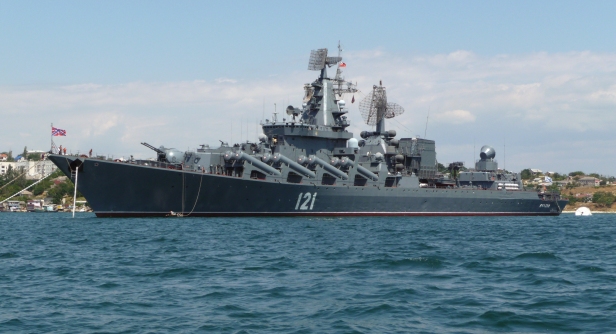
As of the time of writing little is known for certain. All sides seem to agree that a serious fire which also reached unspecified ammunition storages has caused the crew to abandon the ship during last night, and that’s about where the details start diverging. Ukrainian sources very early started talking about a successful strike using the homegrown R-360 Neptune anti-ship missile, two missiles which reportedly struck the vessel and caused the fire which lead to the vessel rapidly capsizing and sinking. The Russian version is that the vessel suffered a fire not related to any attack, and that the whole crew was evacuated with the vessel eventually sinking while under tow due to hull damage brought about by the stormy weather conditions. In a somewhat rare instance, it does seem that Russians indeed were somewhat honest and that the vessel might have been floating in a damaged state for quite a while, as Pentagon spokesman John Kirby earlier this afternoon (European time) described Moskva as “afloat but clearly damaged“.
As a side-note, this is the second warship named Moskva to sink in the Black Sea due to enemy action, the first having been a destroyer that hit a mine while being engaged by coastal artillery outside the Romanian coast in 1941.
But let’s start from the top and break down the scenarios involved. The Moskva as mentioned is fitted out to operate as a flagship, i.e. the command and control hub from which orders are given and the situational picture is kept up to date. While there are conflicting reports about whether Moskva has been operating in that role or whether the duty has been taken over by one of the modern frigates operating with the Black Sea Fleet, Shashank Joshi of The Economist got a quote indicating that shed indeed did function as the flagship.
With the Ukrainian Navy all but non-existent, the value of the sixteen huge P-500 Bazalt anti-ship missiles found along the sides of the superstructure has been rather limited in the war (there are reports that they would have upgraded to the P-1000 Vulcan, but most seem to agree that is not the case. Anyhow, as there are no targets for them currently in the Black Sea, the difference at this point is largely academic). The Moskva has however been active in other roles, including being the ship on the receiving end of the famous “Russian warship, go fuck yourself”-radio message over at Snake Island – which it then responded to by blasting the island with the deck gun. Besides providing naval gunfire support, the vessel is also equipped with a three-tiered air defence that although old is still of value. The most serious of these systems are the S-300F Fort long-range system which sport 64 5V55RM semi-active radar homing missiles (the system is called Rif in the export version). In essence, the system roughly corresponds to the ground-based S-300PS/PM and was introduced in the mid-80’s. As such, it is a far cry from the S-400 batteries found ashore today, but still longer-ranged than the otherwise significantly more modern 3S90M Shtil-1 system and its 9M317M missiles found aboard the Admiral Grigorovich-class frigates of the fleet (Shtil-1 can roughly be thought of as a naval version of the Buk-M2E system). For closer defence, it operates the equally old Osa-M system sporting twin-rail launchers of the original 9M33-family of missiles (SA-8A GECKO in NATO-parlance). The short range-defence is then handled by the 130 mm twin AK-130 main gun and six 30 mm AK-630 close-in weapons systems. There are also torpedoes and anti-submarine rockets, which in this case are of even lesser use than the Bazalt.
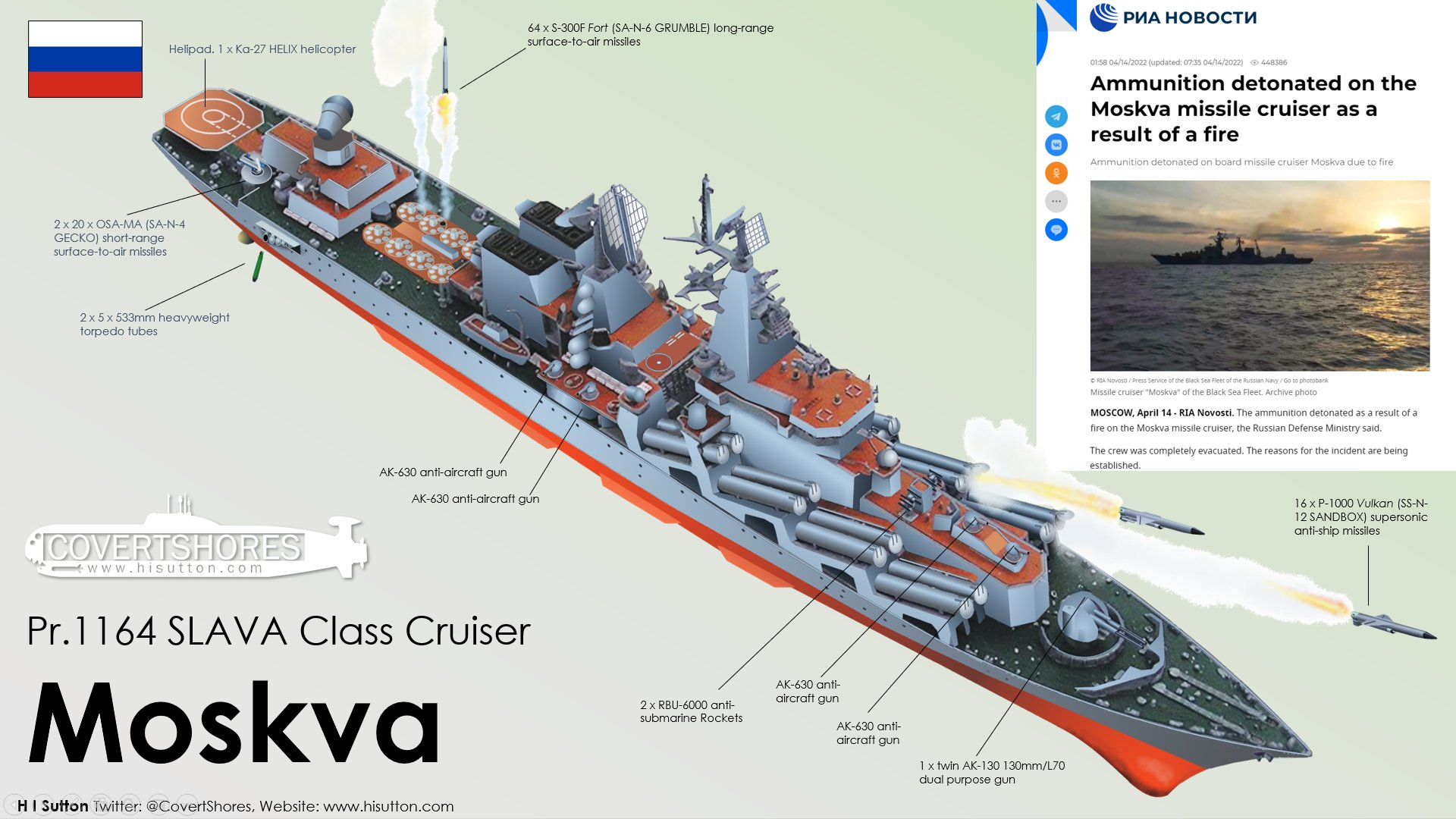
An interesting detail is that there are rumours around a Ukrainian Bayraktar TB2 appearing in the area to ‘distract’ the Moskva during the attack. In fact, it is not at all a far-fetched idea. The major issue of the S-300F compared to newer systems is the limited ability to track multiple targets. The system can intercept up to 6 targets at a time, but only within a 60° sector as the system is tied to a single 3R-41 Volna (TOP DOME) radar. Considering the additional circumstances of the vessel having sustained operations on wartime footing for weeks and it being a stormy night, the crew handling the air defence systems becoming fixated on a drone is entirely possible, especially as sea-skimming missiles would have been even harder to detect on the radar than usual among the low-altitude clutter caused by the stormy conditions. The TB2 might certainly have been combining the distraction role with that of feeding position date of the vessel back to the firing battery (let’s remember that a number of the Bayraktars are operated by the Navy). Some really fancy accounts are even saying that the Bayraktar would have taken out the air defence radars before the sea-skimmers came in, but even if theoretically possible I find it extremely unlikely. Let’s remember that the technology level of the air defences is roughly corresponding to the most modern air defence systems the Royal Navy vessels that went to the Falklands back in 1982 were sporting, and the issues they had with picking up Exocet missiles in time are well-known. The shorter-range systems should in theory have been able to intercept the missiles, but there are several explanations as to why they didn’t do so, ranging from poor performance through to not being active due to the crew underestimating the threat from anti-ship missiles (both of which have earlier lead to wartime losses for different navies).
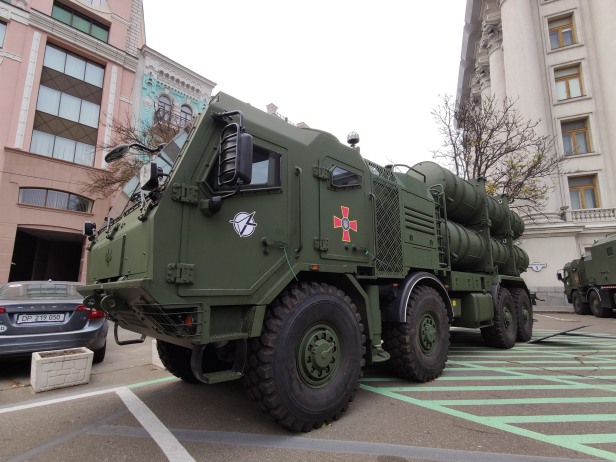
As mentioned the weapon reportedly used by the Ukrainians was the home-developed R-350 Neptune, somewhat related to/based upon the Russian Kh-35 Uran. As such, it is a weapon largely comparable to many western weapons, being subsonic, sporting active radar-homing, and a warhead in the 150 kg class. Approaching the target at very low-level, it is difficult to detect, and it would not be surprising if yesterday was close to the limit when it comes to how bad weather it can operate in (you don’t want to fly lower than the maximum wave height). A 150 kg warhead (or two) won’t sink a cruiser, but there are a number of other factors to take into account, including the possibility of starting a fire – as was alluded to in the opening quote and which was the case with HMS Sheffield in the Falklands – as well as the explosive potential of the Bazalts lined up along the side of the vessel. Both the Ukrainian and Russian versions talk about a fire threatening the ammunition storage, which is a somewhat vague term for a vessel were several key systems lack reloads and all missiles are stored launch-ready. The batteries are expected to have their own Mineral-U mobile radars which could have been the system feeding engagement data, and as said the Bayraktar might have been involved as well.
Notable for the Neptune is that it has been absent during the early part of the war despite there being ample targets. One possibility is simply that there are too few missiles to use them against low-value targets or targets where the fire control data wasn’t unambiguous. It is also possible that these were the first missiles available to the battery, as there had been reports that deliveries had slipped a year from 2021 to this spring. If so, someone has likely been working around the clock since February to get the weapons ready, and if this really was their debut, it sure was quite something!
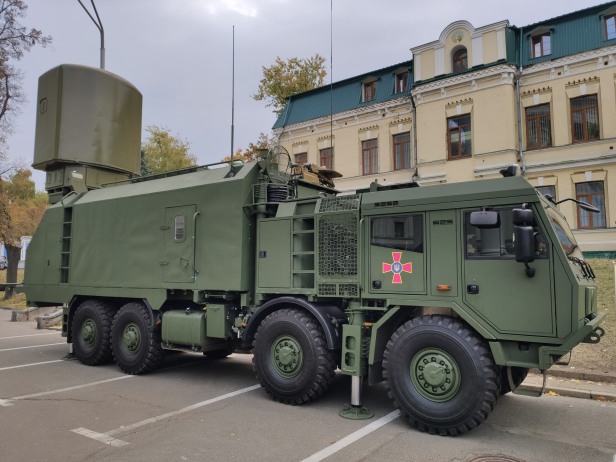
But was it really a missile strike?
While I questioned whether the Tapir lost earlier was caused by enemy action or just an accident, and while the Russian Navy indeed is no stranger to accidents, there are a few things here that leads me to believe the missile strike scenario is the more likely one in this case. The whole scenario does seem plausible, including the weapons used, the usage of environmental conditions and potentially a drone to mask the attack, the choice of target, and so forth. But the most important indication is the statement by western sources that other Russian vessels have turned south to put a greater distance between themselves and the angry coastline. That would not be the expected reaction in case the Russian commanders thought it an accident.
So how big a loss is this to the Russian war effort?
That impact on the war effort depends very much on your point of view. As mentioned there really are no Ukrainian naval vessels operational, and as such the Russian sea lines are not threatened. The utility of the vessel in the current war -which at the end of the day very much is a land war with a maritime flank – is also somewhat limited compared to the more modern frigates and corvettes that are able to fire land-attack versions of the Kalibr cruise missiles. On the flip-side, the Ukrainians have likely shaken the Russian Navy seriously, and any plans on an amphibious landing near Odesa have likely been shelved permanently. Looking 40 years back into history, the similarities to the sinking of the Argentinian cruiser ARA General Belgrano are astonishing, with both vessels in surprise attacks being put out of action, both serving as the flagship of their respective forces, both being old but still packing a serious punch, and both likely having an impact on morale and operating procedures that extend well beyond the loss of their individual combat capability. The vessels are also surprisingly evenly matched in size, with the Moskva being just under a meter longer and the Belgrano being just a bit heavier in displacement. Which one you will hand the dubious honour of being the largest naval vessel sunk since 1945 largely depends on your metrics, but if pressed I’d say the Argentinians still have it.
In more detail the lack of the S-300F air defence system is felt, but not overly much. Again, it had a range advantage compared to the more modern systems on some of the other vessels, but otherwise it was far from modern. The reduction in the number of combat capable hulls is likely to be felt more severely, with just three frigates (two modern), two corvettes, and three OPVs remaining according to one source. With the blockade line having been pushed further south, it also means that naval gunfire support is unlikely to happen and due to the shape of the Ukrainian coast and the Black Sea the blockade line will be longer, further increasing the amount of real estate any single vessel will have to keep its eyes on.
This also potentially open up the possibility to do something about the illegal blockade Russia is maintaining in the Black Sea. In short, you are allowed to blockade your enemy during war, but there are some set rules for how to go about doing so. One of these is that you are supposed to declare the blockade, something Russia hasn’t done. In the grand scheme of things, the undeclared blockade likely ranks as one of Russia’s lesser war crimes, but it is still something, and crucially (my understanding is) that the undeclared nature would give the West the possibility to seize the opportunity and sail some serious vessels into Odesa as a freedom of navigation operation.
These so called FONOPS to ensure that the rules regarding free use of the sea are kept have mostly been associated with China in recent years, but as Charly Salonius-Pasternak pointed out a while back, a FONOPS into Odesa would certainly be a possibility. And as a FONOPS-squadron preferably would have the firepower to take down the adversaries in case they get any ideas, this is one area in which the loss of the Moskva’s Bazalt-missiles would be felt. Compared to e.g. the suggested no-fly zone over Ukraine, a squadron of western destroyers and frigates loudly declaring their intention and sailing into Odesa would probably constitute a lesser risk of escalation into nuclear war even in the case things would go bad and NATO and Russian forces would start killing each other – the sea just tend to play that kind of a role in international politics where a crisis that happens on land is always more serious than one that takes place on open water. The propaganda value for the Ukrainians and the further loss of face of the Russian Black Sea Fleet would be of measurable value, and the vessels staying in Odesa for a few weeks would significantly lessen the threat of strikes or offensive operations against the port, freeing up Ukrainian resources to the drive on Kherson. It would however require more political bravery than the countries with competent enough vessels have so far been able to muster, and as such we are unlikely to it see it any time soon.
But even if the FONOPS stays a dream, the loss of Moskva adds yet another item to the long list of Russian failures and losses in this war. With a crew usually numbering close to 500 (over 500 if including the additional staff when working in the flagship role) this might turn out to be the most serious single loss of manpower of the Russian Armed Forces so far in the war if it turns out the Russian story of the whole crew having been evacuated was wishful thinking. The symbolic value of Ukraine destroying Moscow is also not lost on anyone, and as noted the operations by the rest of the Black Sea Fleet can be expected to become more limited.
And finally, the symbolic value of getting revenge for the occupation of Snake Island is very real.
The Russian warship did really get fucked.


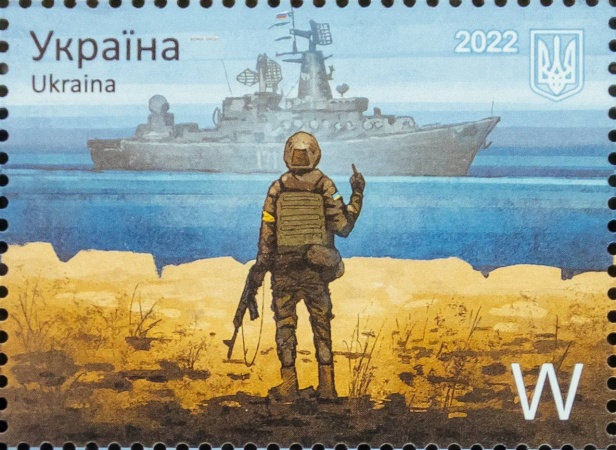
Personally, I believe the out-of-control corruption in Russia is as devastating to its armed forces as it is to every other segment of life in the country.
” believe the out-of-control corruption in Russia is as devastating to its armed forces ”
Corruption has been even worse than expected in these circuimstances, I think.
For example here are news about 1 billion roubles upgrade project. 700 million was stolen.
——————
24.03.2022
Daggers” were repaired for bribes
Industrialists were accused of bribing a caperang
As it became known to Kommersant, an episode with a bribe appeared in a high-profile criminal case of fraud during the modernization of weapons of warships of the Northern Fleet. The investigation intends to apply for the arrest of the former deputy head of the department of the Department of the Ministry of Defense for ensuring the state defense order of Captain 1st rank Igor Supranovich. As it turned out, thanks to his unselfish efforts to maintain and repair anti-aircraft missile systems “Dagger”, “Hurricane”, “Fortress” that factories were admitted, the heads of which are accused of embezzling more than 692 million rubles from the billion allocated for this purpose. And one of the enterprises did not even have a license to repair electronic weapons.
https://www.kommersant.ru/doc/5271652
Faking out your enemy with drones. Sounds like there is a real Tom Clancy Red Storm Rising fan in the Ukrainian military, eh?
A FONOPS operation to Odessa may be very necessary if a ceasefire is in place. It is not likely Russia will stop the naval blockade of Ukraine in case of a ceasefire and may try harassment in case of peace.
Nice work, few comments:
“Ship is full of flammable materials”. This is a line which has been circulated in many books and sources, I an unsure of where it comes from. According to Russian wiki article, the ship is pretty thoroughly compartmentalized. In general though, many of the 60s/70s designed warships were pretty poorly fire-protected, all the cabling required for electronics and weapons had flammable insulation which was a massive fire hazard. All major navies had pretty rude awakenings in this regard, most notable was the loss of Sheffield in 1982.
The idea that a TB2 could have acted a distraction may be plausible, however attempting it might have been counterproductive as a potentially hostile, obvious target would have alerted the crew, and major warships have large CICs where there are multiple people watching their own screens with their own sectors of responsibility to minimize the effect of any kind of ‘distraction’. It’s not like in Star Trek where everyone gathers around to Uhura’s console to stare that one blip on screen! Most successful AShM attacks have been on unsuspecting enemy.
All the other, more elaborate Bayraktar stories sound like bad fiction. Since TB2’s sensors are visual, they would likely be of minimal help in described poor weather conditions.
Reported “pullout” of other Russian warships was probably when Moskva actually sank. No need to hang around any longer.
One thing which perhaps speaks against Ukrainian claims that they attacked the ship is lack of any kind of footage of the operation. When they claimed to have sink Vasily Bykhov, there were videos of Ukrainians troops firing Grads, and celebrations. In stead, Ukrainian military only released “yeah we did it” sort of statement only well after Russia and Ukrainian civil authorities. But, perhaps they just don’t want to release anything yet?
Any way you spin it, loss of fleet flagship is a massive prestige loss for Russian Black Sea Fleet, not to mention major loss of air surveillance and air defence platform, and points to incompetence in leadership. The actual invasion to Odessa was probably not in the cards anyway. Slavas are not really strike assets, although P-500/P-1000 can be used to land attacks to limited degree AFAIK.
Thank you, very informative.
I see a lot of claims and comments about the role of weather in this and many other cases. Past weather is easily verifiable and this case shows how many statements of claims are simply false.
1) Maximum wind speed in Black Sea within 150 km from Odessa was 10 m/s during Wednesday. There was no storm. In fact, it wasn’t even particularly windy. Wind or high seas has nothing to do with this incident.
2) There were multiple layers of cloud and even some rain in the area. There is no chance that loitering TB2 could have visual/IR contact with Moskva, unless it was flying very close to surface and very close to Moskva (highly doubtful).
Thanks for great article!
In particular Marine Traffic which several point to as evidence of low winds did seem to have some issues, with local sources indicating strong breeze and significant waves. Not storm, but certainly bumpy.
If the Bayraktar did provide any kind of targeting data it was almost certainly through use of the AESA-radar which the manufacturer market but evidence of which I have so far seen none.
I don’t think drone the size of TB2 could carry, much less power, a kind of radar which would be of any use as a maritime targeting system. It would have to be much, much weaker than for example typical fighter radar. If this radar version exists, it must be only for very local all-weather tactical targeting and observation.
There was storm in Black Sea at the time, but it hit the Eastern part. Wave height at the Western part was nothing for a large oceangoing ship, but for a ship which probably had a list, no power, stabilizers don’t work, burdened by flooding and/or firefighting water, a modest roll is enough for it to lose stability and turn over, see SHEFFIELD…
Slava has even a weaker point than the fuel of the Basalts. Look at the compartment for the S-300 missals. There is not much in regard compartmentalization there. That’s according to some people actually the best place to put a 150kg warhead in at a subsonic speed.
Sorry for that. Need edit button here otherwise stupid nighttime mistakes and misspelling’s will stay.
Those ‘revolver’ type launchers are probably actually safer than older type missile magazines. Zumwalt is maybe only ship which is significantly better in this regard. The ship has several different magazines, any of which are a hazard. Torpedo storage is another obvious risk, though it may not have carried those.
The Bosporus has been declared closed, so any Nato FONOPS would be consisting of whatever ships are already there, which I guess would be mainly the Bulgarian, Romanian and Turkish navies, that hypothetical squadron doesn’t seem very realistic.
Well, obviously the idea of a NATO FONOPS include the NATO-countries cooperating with it, including Turkey.
Well, the Convention would still be in effect.
Yes, and that allows for a handful of destroyers and frigates, no problems.
The attack on the Moskva also implies that the landing ships are not safe close to Odessa.
Chances are low they’ll be used soon in an operation.
A significant rationale for a FONOPS not mentioned here is the potential resumption of grain exports from Odessa. This would both generate income for Ukraine and, perhaps as a “humanitarian” argument, prevent the starvation of millions of African and Middle Eastern people who depend upon Ukrainian grain. Ukraine had an enormous harvest last year but has no way to ship it currently.